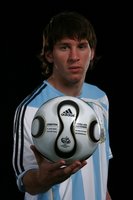
After watching the U.S. go three and out in World Cup, one thing is clear: Our national team needs a number 10. Claudio Reyna was largely ineffective and has since retirted. But more worrisome is the inability of Landon Donovan to step into the role of creative midfielder.
Part of Donovan’s struggles can be traced to head coach Bruce Arena’s uncertainty as to how to maximize Donovan’s strengths. Arena started Donovan as an outside midfielder against the Czech Republic and later used him as a withdrawn forward and, at times, as an attacking central midfielder. The loss of two men to red cards against Italy did nothing to help Landon’s role remain consistent, either.
Those circumstances, however, are out of Donovan’s control but Donovan is in charge of his performance on the field.
After disappearing for much of the first game and incurring Arena’s public wrath for doing so, Donovan bounced back to some degree against Italy. In a more central role, he held the midfield well but his ability to direct a creative attack was not tested. Against Ghana, Arena’s positioning of Donovan entrusted him with controlling the American offense; and Donovan simply couldn’t do it.
Arena’s lineup slotted Donovan as one of two withdrawn forwards behind Brian McBride. The positioning was okay; it gave number 21 the chance to run at the Ghanain defenders.
An individual run through the opponent’s back line is not always on and, when it’s not, a withdrawn forward or attacking midfielder needs to both know when to give the ball up and, perhaps more importantly, play a useful ball. For the most part, Donovan got the first part done – he realized when to distribute. And for the most part, Donovan’s distributions, those final passes the U.S. so desperately needed, were off the mark. The obvious example coming in the waning minutes with a gift-wrapped spot kick from just outside the right edge of the box. Donovan overshot all his teammates from every free-kick-takers dream lie.
That type of thing can’t happen in the World Cup and certainly can’t come from someone you rely on to create an attack. Donovan can still help the U.S. for a while but as a forward. He’s better suited as number 21.


